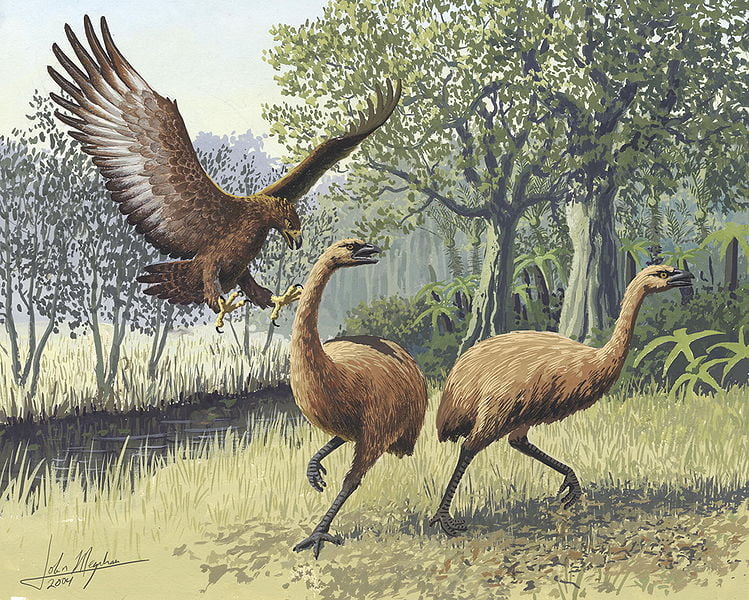Eyles' Harrier

| Eyles's Harrier | |
|---|---|
| Conservation status | |
| Scientific classification | |
| Kingdom: | Animalia |
| Phylum: | Chordata |
| Class: | Aves |
| Order: | Falconiformes (or Accipitriformes, q.v.) |
| Family: | Accipitridae |
| Genus: | Circus |
| Species: | C. eylesi |
| Binomial name | |
| Circus eylesi Scarlett, 1953 | |
It was an example of island gigantism, weighing over twice as much as a Swamp Harrier. It was a generalist predator, taking prey of the same size as small eaglespecies do – land animals weighing one or a few kilograms. In its hunting strategy, however, it was more adapted to avian prey, as sufficiently large mammals were entirely absent from New Zealand. Its shape differed from that of most other harriers, and it was initially mistaken for a huge hawk. Presumably, it hunted diurnal birds in a manner similar to goshawks.
A noted explorer, Charles Edward Douglas, claims in his journals that he had an encounter with two raptors of immense size in the Landsborough River valley (probably in the 1870s), and shot and ate them. These birds might have been a last remnant of the mighty pouakai (Haast's Eagle), but this is very unlikely: there had not been sufficient numbers of suitable prey for a population of Haast's Eagle to maintain itself for about half a millennium at that time; furthermore 19th-century Māori lore was quite adamant that the pouakai was a bird not seen in living memory.
Still, Douglas' observations on wildlife are generally trustworthy; a more probable explanation, given that the alleged three-metre wingspan of Douglas' birds is unlikely to have been more than a rough estimate, is that the birds were Eyles' Harriers – modern estimates tend to assume that a 3-metre wingspan is decidedly large even for Haast's Eagle; that of Eyles' Harrier was probably somewhat short of 2 metres. Although the Eyles' Harrier also went extinct in prehistoric times, its dietary habits alone make it a more likely candidate for late survival.
This species was named for Jim Eyles, paeleontologist and former director of the Nelson Provincial Museum and the West Coast Museum.

No comments:
Post a Comment